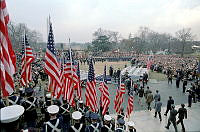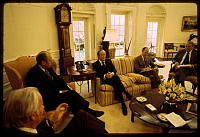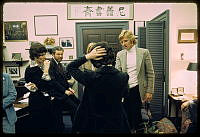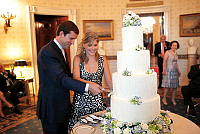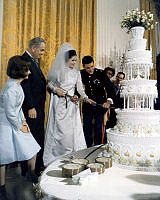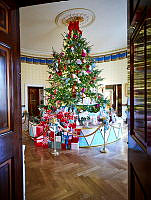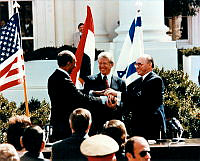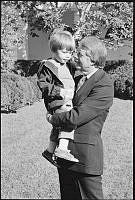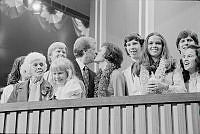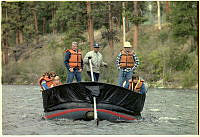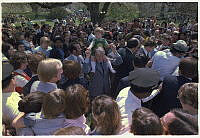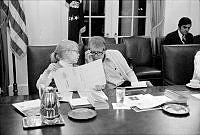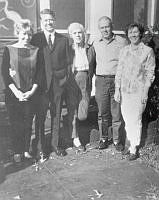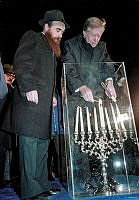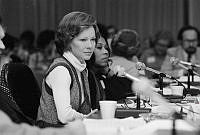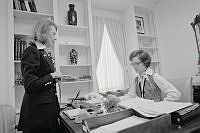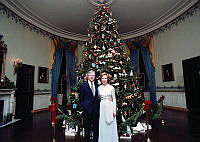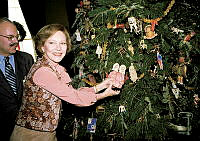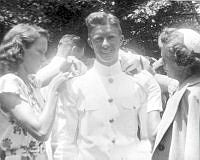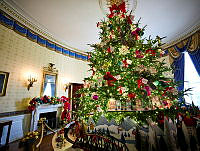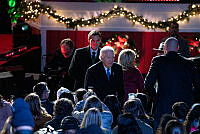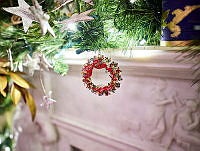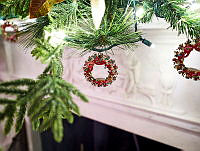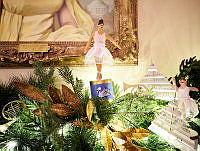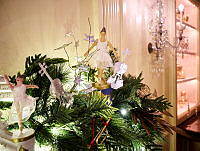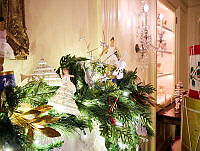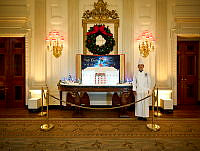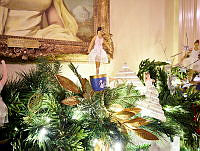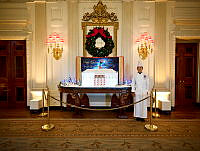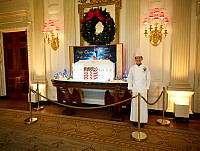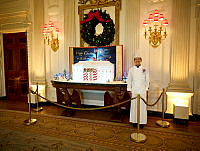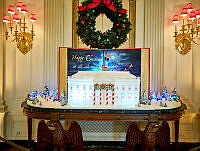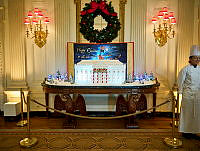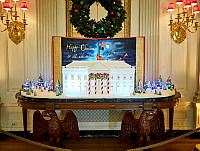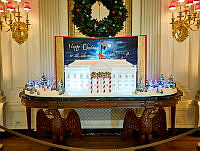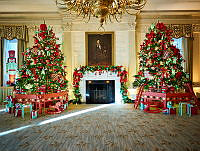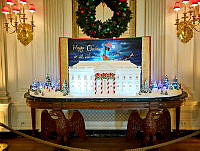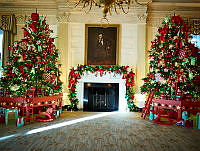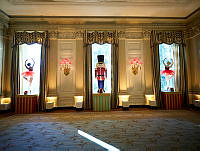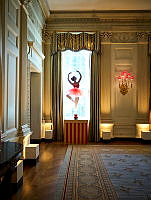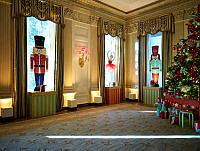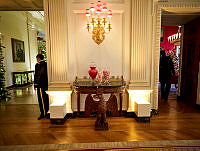
Treasures of the White House: Avenue in the Rain
Signed and dated lower left: Childe Hassam / February 1917
Inscribed on reverse, lower center: C. H. [circled] / February 1917
963.422.1
Hassam was the most prominent of the "Ten American Painters," a group founded in 1898 and influenced by recent French art. In his native Boston he had worked as a wood engraver of book illustrations before beginning to paint. Study in France in the late 1880s had introduced him to the Impressionists, whose broken brushwork and high-toned palette he emulated. Regarded as the leading American Impressionist, Hassam actually disliked the term and was stylistically conservative, with a tendency toward the chic in figure type and costume. Sociable and generous, he led a charmed professional life, achieving both fame and financial success.
The Avenue in the Rain was painted at the height of Hassam's powers, and is one of some 30 related paintings of flag-decorated streets that the artist produced between 1916 and 1919, during and immediately after the First World War. That they are intensely patriotic works is patent, while aesthetically they bear witness to the example of Claude Monet, both in the subject (Monet created two paintings of flag-bedecked avenues on a single day in 1878) and in the concept (a series of paintings of a motif, such as haystacks or Rouen Cathedral).
Hassam had long painted city views, and the ones in the flag series represent the climax of his career. The avenue is Fifth Avenue, frequently decorated with flags as American sentiment moved inexorably from isolationism toward intervention. The artist's most striking device here is the projection of flags into the picture from unseen points of anchor beyond the frame, covering a quarter of the surface of the painting. In one sense the flags become the surface of the painting, an identity seconded by the tall "hanging" format, which echoes a flag's shape.
Painted in February 1917, this work may have had a specific impetus: On January 22 President Wilson had delivered his "Peace Without Victory" address, holding out the ideal of a compromise peace that would leave no residue of bitterness. But sentiment to enter the war had been building since the May 1915 sinking of the British liner Lusitania by a German submarine. When the German government announced on January 31, 1917, that unrestricted submarine warfare would resume, the president broke off diplomatic relations. Three weeks later a German diplomatic note to Mexico proposing an alliance against the United States was intercepted, and Wilson sought congressional approval to arm American merchant ships. Although a declaration of war was still five weeks away, the turning point had been reached. Patriotic fervor peaked. It is reflected in The Avenue in the Rain, which ultimately is not a street scene, not a painting of flags, but in essence a vibrant flag unto itself.
Source: William Kloss, et. al., Art in the White House, New York: Abrams, 1992.
- Artist
- Childe Hassam (1859–1935)
- Medium
- Oil on canvas, 42 x 22 1/4 inches (106.7 x 56.5 cm)
- Credit
- Gift of T. M. Evans, 1963















